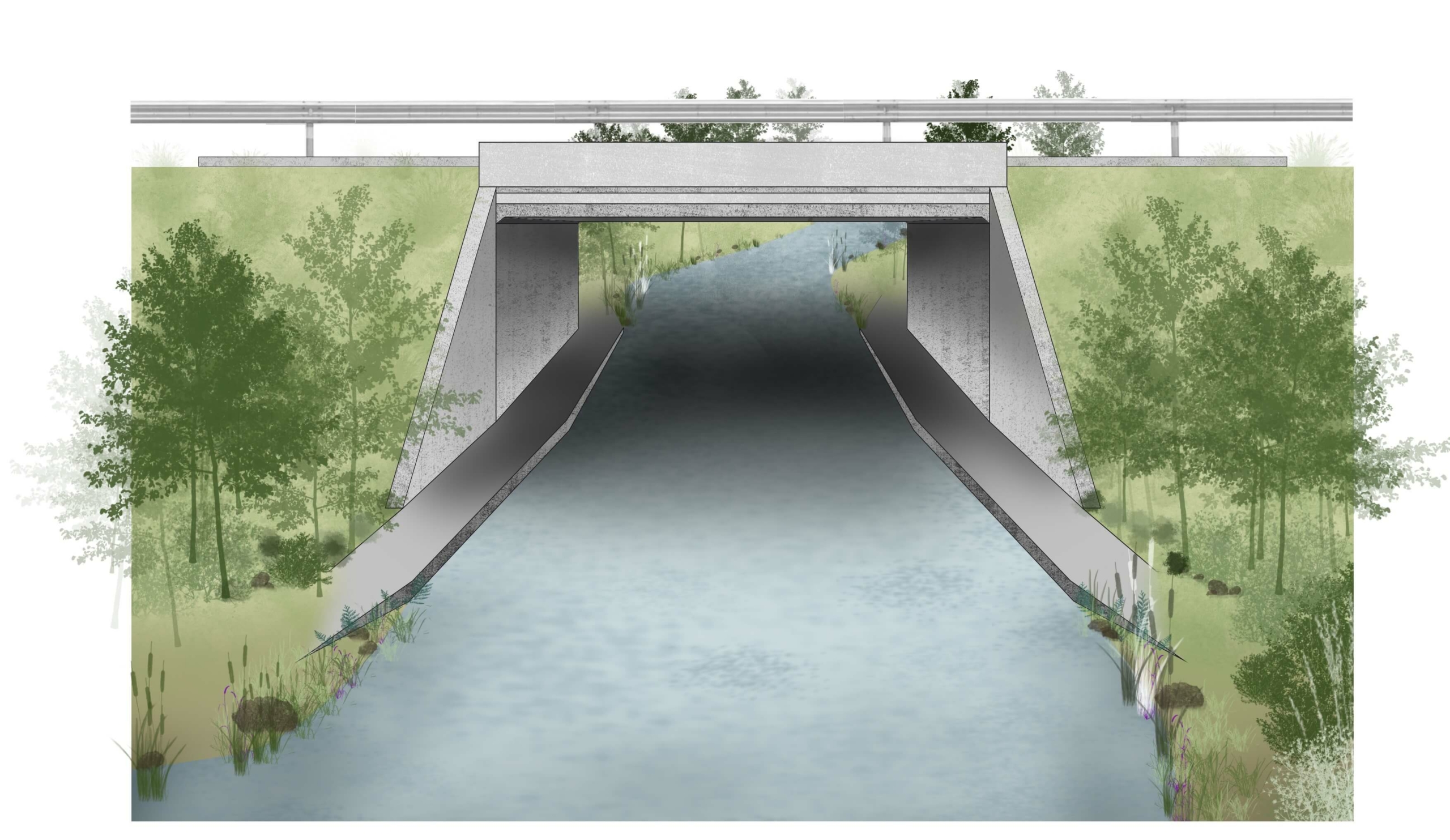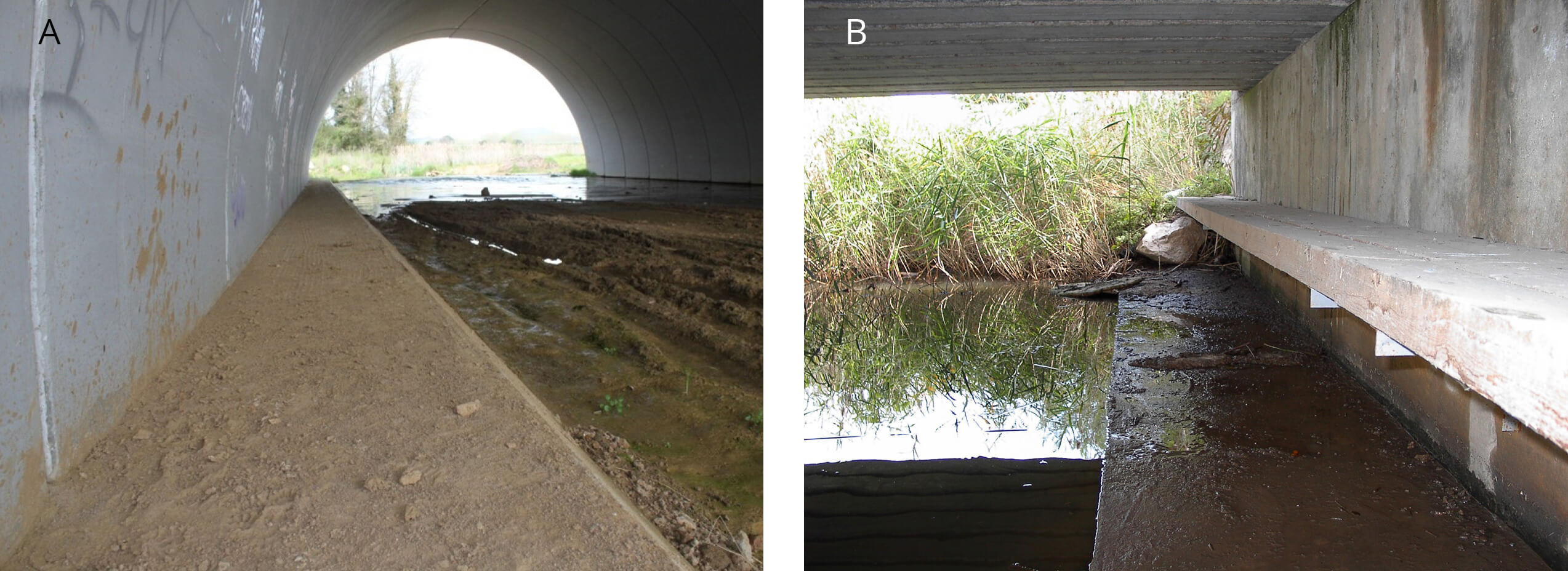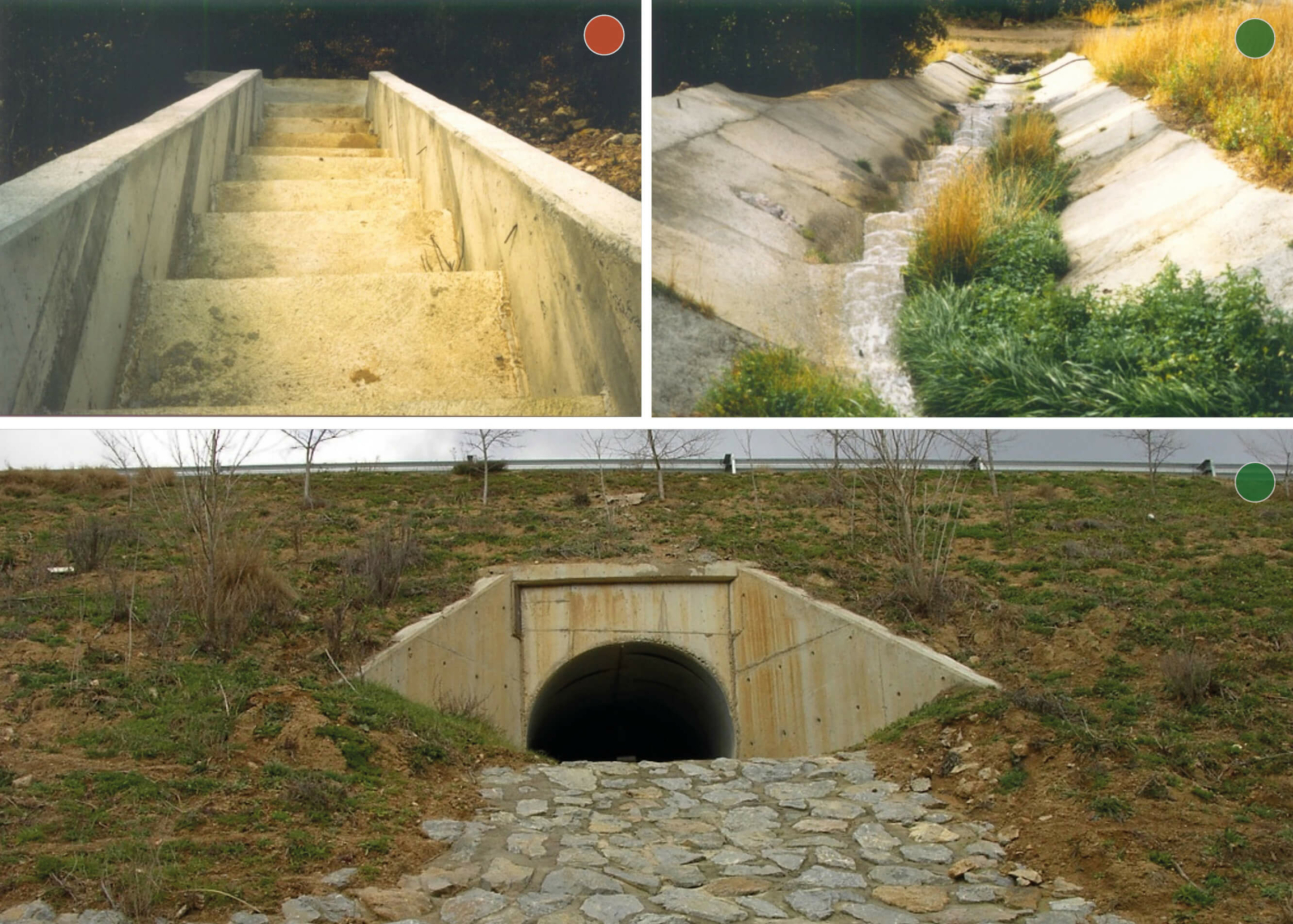Conventional culverts, usually pipes or rectangular structures (but also large arches in some particular locations), are designed to allow the flow of water and may contain rain water from perimeter drainage or small streams. Some culverts carry water all year round or during long periods. In these areas, adaptations to permit terrestrial animal passage, such as dry ledges, are needed (Figure 5.5.40; Figure 5.5.41). Where fish populations are present, culverts have to be designed to also enable fish passage (see requirements for fish in Section 5.5.11 – Fish passages).
Modified culverts have been shown to be used by small fauna in particular, including small carnivores but also by fish and other aquatic species. In situations where culverts are large and dry for much of the year (e.g. in Mediterranean areas) they may also be used by larger mammals (Figure 5.5.42).

Adaptation of culverts
- Where culverts are built to lead a stream, the design has to be such that not just the water is led through, but also dry areas on both sides of the watercourse are provided. The same principles apply as for river crossings (see Section 5.5.6 – Adapted viaducts).
- Lowering a part of the concrete base surface to channel water may provide also a guiding line for small animals.
- If the culvert frequently contains water, the base must be adapted to keep a part of it dry at all times (Figure 5.5.42). This can be achieved with a lateral embankment or ledges (i.e. a board of rot-proof material) at both sides of the structure with a minimum width of 50 cm (see Table 5.3). Height should be adapted to the hydraulic conditions to allow the ledge to remain above the water level. Floating systems in channels, for example a wooden board which can move depending on the water level, are also used successfully.
- Prefabricated rectangular culverts can be designed with an integrated ledge.
- In existing corrugated steel drainage structures, the base should be filled with concrete or other suitable material to provide a more attractive substrate for animal movement.

Culvert exits
Certain culverts may have stepped exits to reduce water erosion of embankments. These can be a trap for animals using the culvert as a passage and should be modified with structures to reduce the height of the steps. Different modifications can be made, e.g. to open the lateral walls of the stepped channel or substitute the steps with a ramp (Figure 5.5.43).
- The ramps should have a rough surface to provide a good grip, e.g. by combining stones and concrete.
- The recommended slope for the lateral walls of the stepped channel is below 30º, with a maximum of 45º.
If new culverts are planned, it is crucial that the requirements of fauna are also taken into account. Depending on the target species and the length of the culvert, different dimensions apply.
Adapted culverts also need frequent maintenance (particularly after storms or other weather events) so access must be provided for people and machinery. This is why an adapted culvert has a recommended minimum width of 2 m.

